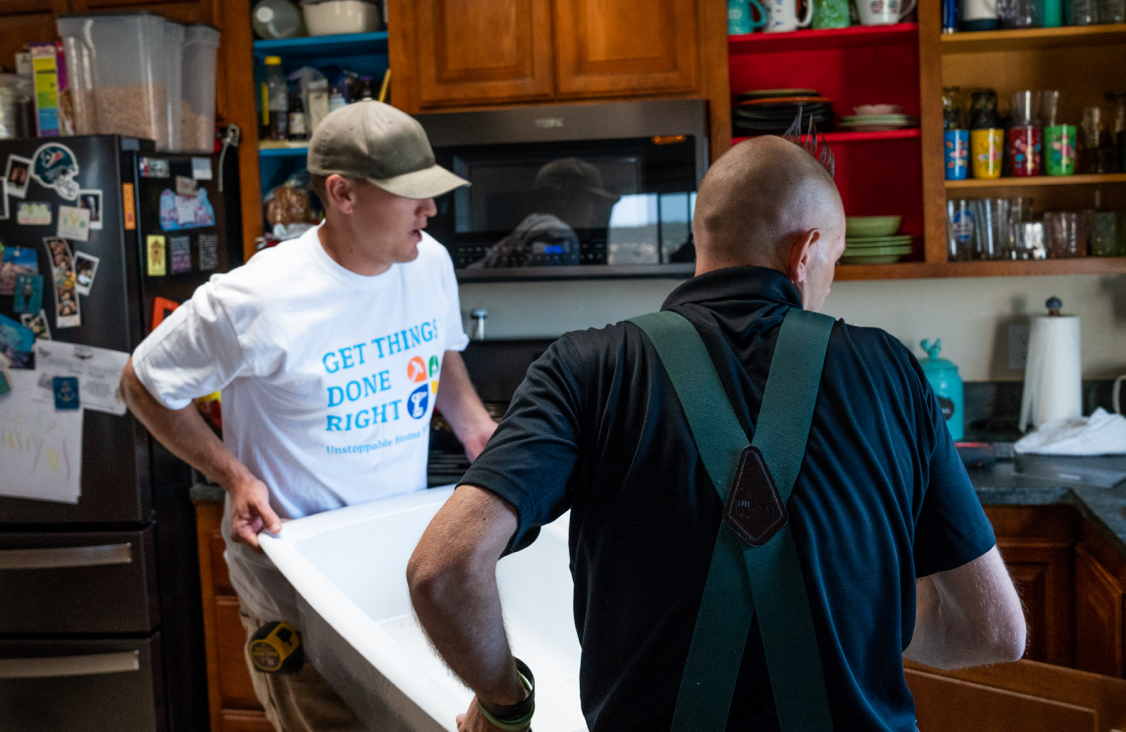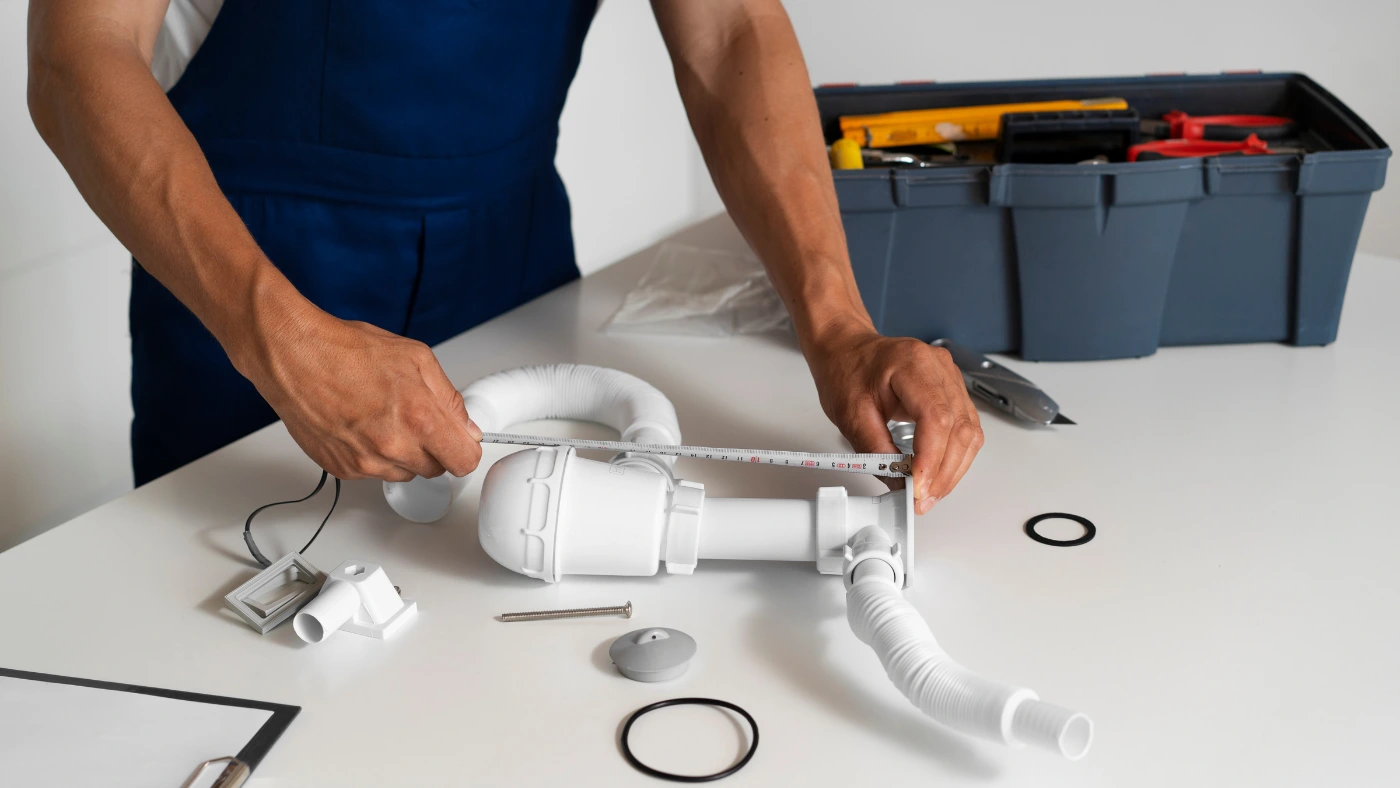Want to win more jobs with less effort?
Grow your business and send quick quotes with our home service software.

Working for someone else, getting paid was easy. You clocked in, did the job, and every two weeks, money magically showed up in your account. Taxes were already taken out, and at the end of the year, you got a W-2. Simple.
But now you own the business. The truck has your name on it. Maybe you’ve hired a tech or two. You’re landing your own jobs, running your own schedule. With that new freedom comes a new question: How do you actually pay yourself?
Well, that depends how your business is set up. In this guide, we’ll break down how payment differs by business structure, what taxes you’ll need to pay, and tips for avoiding common mistakes.
Salary vs. owner’s draw: What’s the difference?
There are two main ways to pay yourself as a business owner:
- An owner’s draw is when you take money out of your business account and transfer it to your personal one. It’s common for sole proprietors, single-member LLCs, and partnerships. You’re not on payroll, so there’s no W-2 or regular paycheck. However, you’re taxed on total business profit, not just what you withdraw.
- A salary means you’re on the company payroll. This is required for S corporation and C corporation owners who actively work in the business. You get a paycheck, taxes are withheld, and you receive a W-2. This can make your income more predictable and help you qualify for things like loans or mortgages.
Some business types use other forms of compensation that aren’t technically salaries but serve a similar purpose. Guaranteed payments (used in partnerships) and dividends (used in C corps) aren’t run through payroll, but they still come with tax responsibilities. Only W-2 wages count as a salary in the eyes of the IRS.
How to pay yourself by business type
Here’s a quick breakdown of how you get paid, what tax forms you’ll need, and what taxes you’ll owe.
| Business type | How you pay yourself | Tax forms | Taxes you owe |
| Sole proprietor or single-member LLC | Owner’s draw (transfer to personal account) | Form 1040 (Schedule C) | Income tax + self-employment tax on all business profit |
| Partnership or multi-member LLC | Guaranteed payment + profit distribution | Form 1065 + K-1 | Income tax + self-employment tax on guaranteed payments and your share of profit |
| S corporation | W-2 wages + profit distributions | Form 1120-S + W-2 + K-1 | Wages: Payroll tax Distributions: No self-employment tax, just income tax |
| C corporation | W-2 wages + dividends (if declared) | Form 1120 + W-2 + 1099-DIV | Double tax: The corporation pays tax on profit; you pay again on dividends |
Not sure which category you fall under or how to pay yourself the right way? Housecall Pro Tax can help you set up a plan based on your business structure and income goals. Book a call to get personalized advice from a dedicated expert.
Get In Touch: 858-842-5746
Let us earn your trust
, On average, Pros increase monthly revenue generated through Housecall Pro by 50% after their first year.
See plan options and feature breakdown on our pricing page.
Paying yourself as a sole proprietor or single-member LLC
This is the easiest structure, and it’s how a lot of home service business owners start out. You pay yourself with an owner’s draw: simply move money from your business account to your personal one. No payroll system, no W-2.
How you’re taxed
You and the business are the same legal person in the eyes of the IRS, and you file taxes on your personal return using a Schedule C. But you’re taxed on what the business makes, not on what you take out. This is where a lot of pros get tripped up.
Let’s look at an example: Say your revenue is $100,000 for the year and you spend $30,000 on tools, supplies, fuel, and insurance. That leaves $70,000 in profit. Even if you only move $50,000 into your personal account, the IRS taxes you on the full $70,000. The $20,000 you didn’t touch? It still counts as income. That surprises a lot of first-time business owners.
Because you’re not an employee, you’ll also owe self-employment tax on top of regular income tax. Paying the extra tax can hurt, but you need to know what’s coming.
Paying yourself as a partnership or multi-member LLC
When you add a partner to the business, things get a little more complex. You’re still not on payroll, and you still don’t get a W-2. But now, you’ve got two types of payments to think about.
- The first is a guaranteed payment. This is a fixed amount the business pays you for the work you do, whether the company makes money or not. It’s a way to make sure you’re paid for your hard work, not just your ownership.
- The second is a profit distribution. Once all the expenses are covered, including any guaranteed payments, you and your partner split whatever’s left, based on your ownership share.
How you’re taxed
Both of these get taxed. Just like a sole proprietor or single-member LLC, you pay income tax and self-employment tax. And again, how much cash you and your partner(s) take out for personal use doesn’t change what you owe. The IRS cares about total profit.
It’s important to keep track of your capital account behind the scenes. That’s the record of:
- How much you’ve put into the business
- How much you’ve earned
- How much you’ve taken out
Partnerships can get out of balance fast. If one partner takes more or contributes more, their capital account will show it, and that directly affects how profits are split and how much each person can withdraw.
Paying yourself as an S corporation
This setup is more advanced, but many growing businesses switch to it for one key reason: tax savings.
In an S corp, you’re both an owner and an employee. That means you have to run payroll and pay yourself a salary just like any other job.
How you’re taxed
You’ll get a paycheck and a W-2, and the company will withhold taxes from your wages. But here’s the benefit. After you’ve paid yourself a reasonable salary, any remaining business profit can be taken as a distribution. Those distributions aren’t subject to self-employment tax. That can mean big savings, especially once your business starts earning more.
Let’s look at an example: Say you run an HVAC business and your S corp brings in $120,000 in profit after expenses. You pay yourself $60,000 as a W-2 wage. The remaining $60,000? That’s a distribution, and it’s only taxed as regular income, not as self-employment income.
Keep in mind that the IRS watches this closely. You can’t just skip the salary to avoid taxes. Underpaying yourself is a red flag that can trigger an audit, so give yourself a fair wage.
Paying yourself as a C corporation
This structure isn’t common for home service businesses, but if your company is a C corporation, your pay works similarly to an S corporation. You get paid wages through payroll, and you pay taxes like any employee—with one key difference.
How you’re taxed
When the company earns a profit, the corporation pays the corporate income tax. Unlike S corps, where profits pass through automatically, C corps keep earnings unless the board says otherwise. If the board of directors declares a dividend payment (from that taxed income), you’re taxed personally on the dividend payment you receive.
That’s called double taxation, and it’s why most small businesses avoid the C-corp structure. This is usually only appropriate when there’s a specific reason for it, like raising outside investment or keeping earnings in the company long term.
When to start paying yourself as a business owner
You should start paying yourself as soon as your business is consistently generating enough income to cover its expenses. There’s no hard-and-fast rule, but many small business owners start taking modest draws once they’ve covered equipment and operating costs—usually within 3–6 months if jobs are coming in consistently.
In the beginning, it’s common to reinvest profits into marketing, tools, or growth. But once your company can support itself, taking a regular paycheck—even a small one—will help you build healthy financial habits and avoid personal cash issues. Waiting too long can lead to burnout or poor tax planning, even when your business is technically doing well.
How much to pay yourself as a business owner
It depends on your business type, your profit, and your role in the company.
For sole proprietors and LLCs, there’s no set amount, but a good rule is to pay yourself a percentage of your net profit after expenses. Many owners start with 30% to 50%. Just make sure you leave enough in the business to cover taxes and operating costs.
If you’re an S corp owner, the IRS requires that you pay yourself a “reasonable salary” based on your role, industry, and experience. Remember that lowballing just to save on taxes can trigger an audit. Look at what you’d pay someone else to do your job, and start there.
Tax tips for paying yourself
If you’re a sole proprietor, partner, or S corp owner taking distributions, the IRS expects you to pay taxes on your income throughout the year, not just at tax time.
These are called estimated tax payments, and they’re generally due on or around the following dates: April 15, June 15, Sept. 15, and Jan. 15.
Unlike when you were an employee, where taxes were withheld from each paycheck, there’s no automatic withholding now. You’re responsible for paying tax on your net business profit, regardless of how much money you take out of the business.
Miss those quarterly payments, and you could face IRS penalties, even if you pay everything when you file your return. Tools like Housecall Pro Tax can help you estimate your tax burden and plan ahead, so you’re not caught off guard each quarter.
Common mistakes and how to avoid them
Even if your setup is technically correct, a few common mistakes can create a mess for your books, your taxes, or both.
1. Mixing personal and business money
This is a huge one. If you’re using the same debit card to buy parts for a job and groceries for your family, it’s impossible to track what you really earned. Open a separate business bank account. Run everything related to the business through it and nothing else.
2. Taking random amounts as “pay”
Don’t just pull out cash when the account looks full. Choose a schedule (weekly, biweekly, or monthly) and stick to it. Consistency builds discipline and shows lenders or investors you’re a legit business.
3. Not Setting aside taxes
If you’re not on payroll, the IRS isn’t taking taxes out for you. You need to do it yourself. If you’re not setting aside 25% to 30% of your profit for tax season, you’re playing with fire.
Final thoughts: Make paying yourself a priority
Paying yourself is more than just taking money when you need it. It’s about protecting yourself from tax trouble and setting your business up for real growth.
Whether you’re a one-person show and just starting out or you’re running multiple crews across town, understanding how money flows from your business to your pocket is one of the most important parts of being a successful pro.
If you’re still guessing, using your business account like a personal ATM, or wondering whether it’s time to switch your business model, talk to someone who knows. Get a plan. Stick to it.
Not sure where to start? One of our specialists can walk you through the smartest way to pay yourself, reduce your tax burden, and keep more of what you earn. Book a call.





